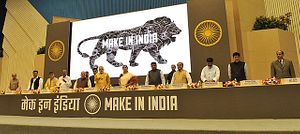Indian Prime Minister Modi arrives in the United States this weekend, for a five-day visit split between New York and Washington, DC. He’ll have a full program in New York to start, with a speech at the UN General Assembly, numerous meetings with CEOs, speeches here at CFR and at the Global Citizen Festival in Central Park, and the headline-topping gathering of his closest 18,000 friends in the Indian American community at Madison Square Garden (to be simulcast in Times Square as well). That would be a heady program on its own.
But he’ll have an equally full program in Washington, which he will reach late Monday afternoon. President Obama will host him for a small, exclusive working dinner (over which the Indian press has begun to perseverate, since Mr. Modi will be on a lemon water and honey fast for Navratri). He will have discussions with the president, and other senior members of the administration will call on him. Vice President Biden will host a formal lunch at the State Department; he will meet with members of Congress; and he will address the U.S.-India Business Council before flying home Tuesday evening.
It’s a packed schedule. Some have already criticized the visit as too much, and likely to deliver too little. Others are asking what the big “deliverables” might be. It’s a good question to ask, since U.S.-India relations have been rocky during 2014, and economic ties have been troubled for several years.
I argue in Mint today that the place to look for deliverables will be Wall Street, not 1600 Pennsylvania Avenue. Two equally important factors make the private sector particularly important for bilateral ties right now.
The first is India’s urgent need to recapture economic growth, the central plank of Modi’s campaign earlier this year. Because of that domestic urgency, Modi has focused his international diplomacy on seeking big-dollar deals to help build India’s much needed infrastructure—a $1 trillion over ten years need—as well as a new initiative to jump-start India’s manufacturing sector in order to create jobs. His visit to Japan resulted in a $35 billion over five years development assistance headline. Chinese President Xi Jinping’s visit to India produced a $20 billion investment announcement, focused on infrastructure and industrial parks. Given that Modi chose to roll out, with great fanfare, his new “Make in India” initiative to attract foreign investment in manufacturing the day he left for New York, we can bet his single most important priority from his U.S. visit will be wooing foreign investment.
And this leads to the second reason why New York has an outsize role for India’s interests on this visit. Washington is ultimately not the core audience for the Modi message on investment and manufacturing in India. The United States government has tools to encourage, support, and promote exports; and tools to encourage investors to look overseas; but the U.S. government does not direct investment nor guide companies on their decisions. Companies need to reach their own conclusions in accordance with their business models. All those CEOs breakfasting with Modi in New York will be listening closely to his pitch about the new Indian business environment, and if things sound right, and the business model works, they’ll respond.
Alyssa Ayres is Senior Fellow for India, Pakistan, and South Asia at the Council on Foreign Relations. She blogs at Asia Unbound. This post appears courtesy of CFR.org and Forbes Asia.

































